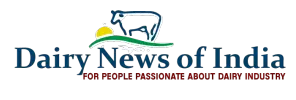Source:financialexpress.com
Development and growth of dairy sector in India has been the most successful of all the agro-economic programmes ever undertaken anywhere in the world. There have been two notable investments. Funds invested through dairy cooperatives between 1970 and 1998 (Operation Flood), and the decision (a policy investment) to liberalise the dairy sector that had until 1991 been restricted. These have contributed to consistency in growth of milk production that has averaged 4% during the last three decades. As the government had invested through Operation Flood, the private sector has more than matched that investment. It has made India the top milk producer. Livestock sector accounts for 28-30% of GDP of agriculture.
Milk contributes close to a third of gross income of rural households, and in the case of those without land, nearly half. About 68 million rural households—of which three-fourths are landless, marginal or small farmers—are engaged in milk production. The distribution of rural income is very low for the dairy sector, indicating that ownership and income is more evenly distributed and the progress in this sector will result in a balanced development of rural economy. Milk ensures food security, nutritional security and security for life in rural India. Owning a cow or a buffalo and producing milk acts as an efficient barrier against farmer suicides.
There is one serious weakness in the activity of milk production—Indian cows and buffaloes are amongst the least productive. To improve per-animal productivity, in Budget FY17, the government should consider investment made in the organised dairy farming sector as part of CSR. It would make large corporates invest in tech-backed dairy farming in a big way. This would help small farmers learn newer techniques of dairy farming. The Budget must consider declaring income from such mechanised dairy farms as ‘income from agriculture’, as provided under the Income-tax Act.
Income from agriculture is exempt from income-tax, but organised farms that produce milk are not. The government does not get any income from milk production as most of it is from smallholders and others somehow evade it. Milk production from organised dairy must be declared agricultural income.

In 2013, dairy farmers got the best-ever price for milk. This was because of global demand, resulting in large dairy exports from India. It means that dairy exports on a large scale benefit milk producers but do not hurt consumers, and the dairy sector is moving towards creating temporary market surplus of skimmed milk powder (SMP) and other products. The central Dairy Development Department granted R176 crore to cooperative dairies in October 2015 to reprocess the SMP nearing expiry. While cooperatives would get relief, the sector would accumulate surplus SMP and lead to a fall in prices. Budget FY17 must provide the same amount of subsidy to revive exports.
In India, all agri-produce is supported through MSP but milk is left out. Budget FY17 must pay attention to this. It may be difficult to operate an MSP mechanism for milk, but market intervention through creation of a buffer stock of SMP and butter should not be difficult. The government must appoint the National Dairy Development Board as the intervention agency to create a stock of 50,000-60,000 tonnes of SMP and 8,000-10,000 tonnes of white butter. Another way of liquidating surplus SMP is to purchase surplus milk and powders from dairy plants and channelise it to the Mid-Day Meal Scheme.
Milk is highly perishable. Processing (milk powder, butter, ghee, cheese) extends its life. But setting up facilities for processing is capital-intensive. Also, handling of dairy products requires a reliable cold chain, needing investment in sales and distribution. So, machinery and equipment used by dairy industry should be exempt from excise duty.
Central sales tax, charged at 2% on dairy products, must be reduced to 0%. Some plants manufacture low-cholesterol ghee—a healthier option for cooking. Taxes on it are in the range of 5% to 12.5%. Low cholesterol ghee should be exempt from tax to promote it in the national health campaign. VAT is charged at 5% on SMP and chakka (raw material for shrikhand), and 12.5% on table butter, cream, etc. All milk products should be charged at a uniform rate of 5%.
There is no tax on milk but VAT is charged on ultra-high-temperature processed (UHT) milk. Due to its longer shelf-life, UHT milk is best catered to the requirements of defence forces and people living in remote areas, where availability and refrigeration facilities are poor. To provide relief to these users, VAT on UHT milk should be withdrawn.
Comments
comments




















